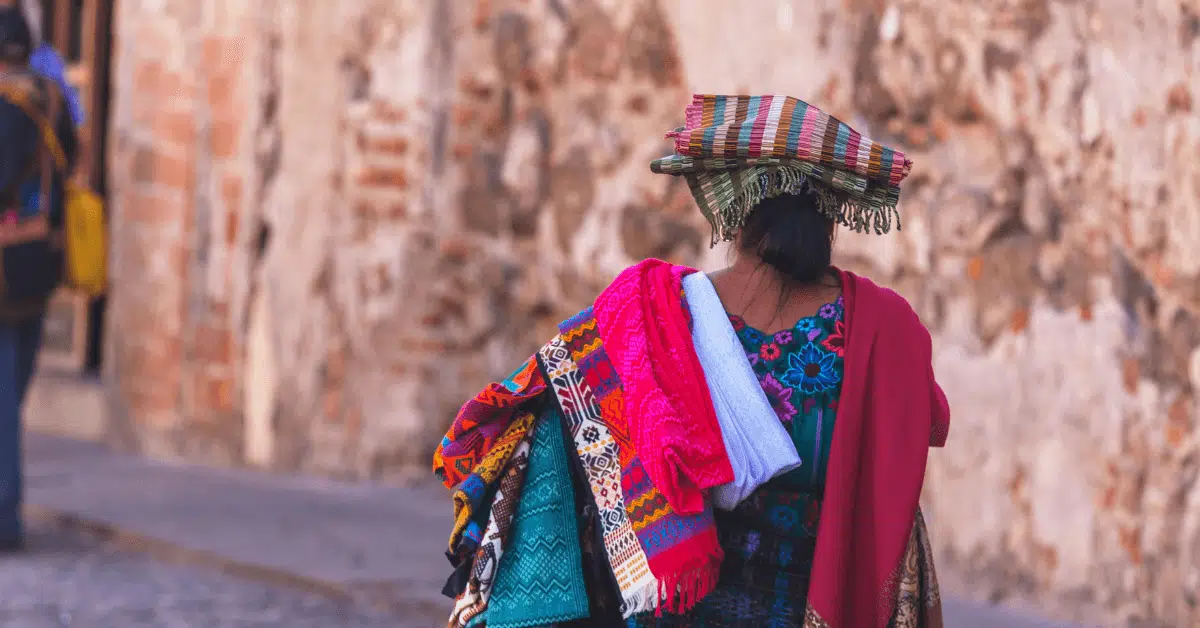7 Best Markets in Latin America (And How To Visit Them)
One of the best ways to dive into local culture during travel is always by visiting a local market. They’re often the best ways to meet people, learn about a culture, and try local food on a budget.
After years of living abroad across Latin America, we’ve had the chance to visit some of Latin America’s most fascinating markets. In this ultimate travel guide to the best markets in Latin America, we’re sharing all the best markets found in cities across Latin America that will set your travel experience apart.
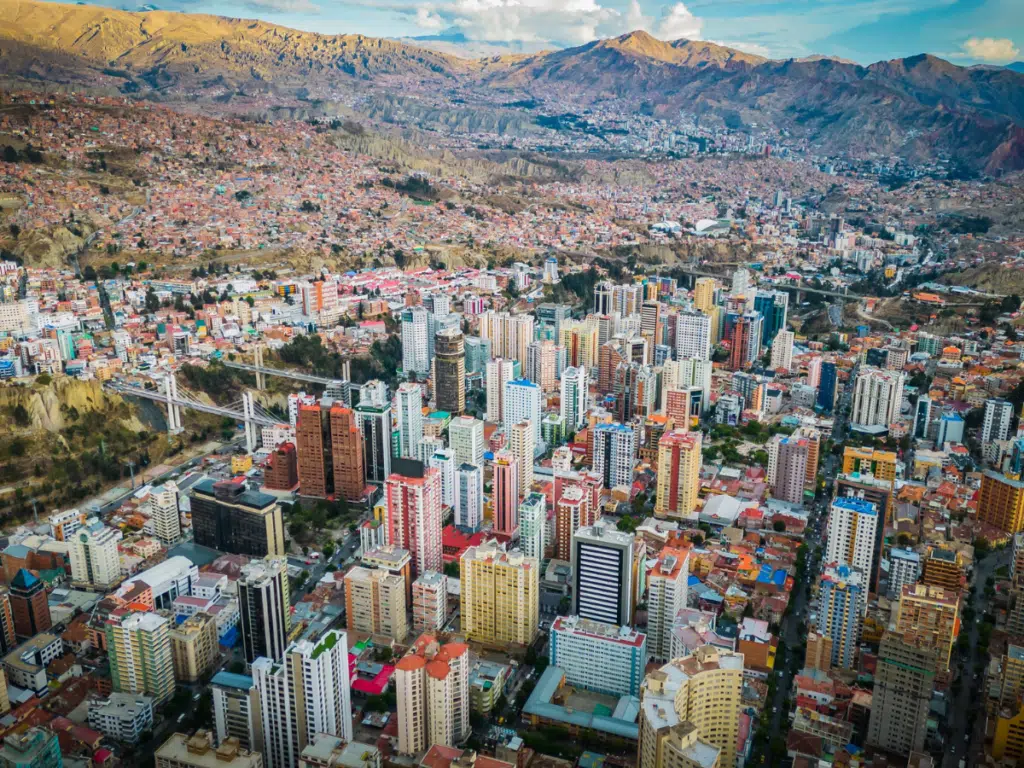
This post contains affiliate links that may reward me monetarily or otherwise when you use them to make qualifying purchases – at no cost to you. As an Amazon Associate, I earn from qualifying purchases. For more information, please read our disclosure policy.
Best Markets in Latin America
You can’t get too far in Latin America without stumbling across a market, whether it be one exclusively for fresh produce or offering age-old antiques and priceless treasures. These are some of the best markets in Latin America for every kind of market experience:
- Most Fascinating Market in Latin America: Witches Market | La Paz, Bolivia
- Best Market in Latin America for Textiles: Chichicastenango Market | Guatemala
- Best Market in Latin America for Souvenirs: Otavalo Market | Ecuador
- Best Market in Latin America for Food: Mercado Central | Santiago, Chile
Planning a trip around to visit any of these markets will make for a travel experience you won’t forget. Hidden in some of the best cities in Latin America, they’re gems all their own. Read on for where to find these markets and more, plus how to best enjoy your visit.
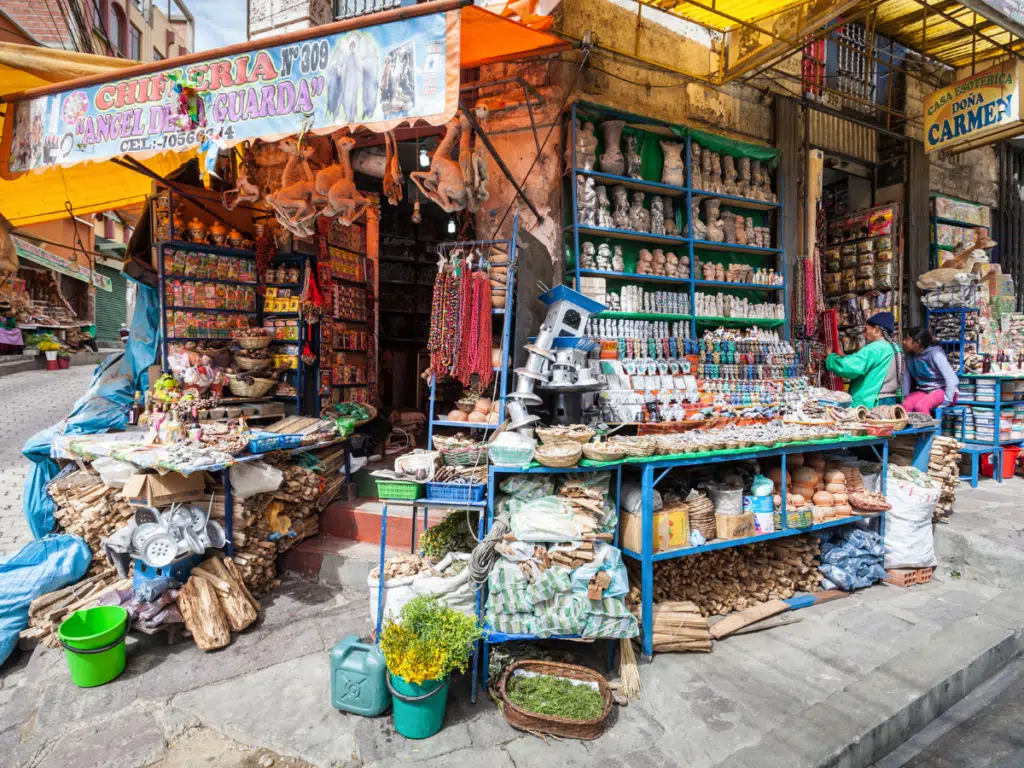
Markets in Latin America
1. Witches Market | La Paz, Bolivia
Most Fascinating Market in Latin America
The Witches Market in the historic center of La Paz, Bolivia is easily the most fascinating market in Latin America and a favorite destination for visitors to Bolivia. Known as El Mercado de las Brujas and La Hechiceria in Spanish, this market is home to countless products used in ceremonies and rituals performed by the indigenous communities in Bolivia.
Some of the most common items you’ll see are dried llamas. Traditionally buried in the foundation of new buildings as an offering to the Pachamama (Mother Earth), these have a very special place in the local Aymara indigenous culture. You’ll also find dried animals like armadillos and anteaters, medicinal herbs, syrups and potions, and statues used in ceremonies and on altars.
Keep an eye out for the yakiri – these are men in the market who generally wear black bowler hats, who hold the knowledge and practice of the market, and who perform healings and rituals with the products in the market. This is a great place to visit as a part of a guided tour to learn more.
While the market caters mostly to locals, plenty of visitors to La Paz make a stop at this incredible market to learn more about the cultures and traditions behind it – you won’t feel out of place when visiting.
Read More: 24 Best Things To Do in La Paz, Bolivia

2. Chichicastenango Market | Guatemala
Best Market in Latin America for Textiles
If you’re interested in textiles, you don’t want to miss this market! Located in the small town of Chichicastenango in the highlands of Guatemala, the Chichicastenango Markey ensures travelers get a close-up look at the incredible textiles and embroidery that have made Guatemalan artisans world famous.
One of the main things you’ll see here is the array of intricately embroidered huipils, the embroidered blouses worn by indigenous women in the highlands.
While the embroidery and vast array of textile designs make Chichicastenango easily one of the best markets in the Americas for textiles, this market has a lot more to offer as well. The market also has a mix of produce, local products, delicious street food, and much more.
Most visitors to the Chichicastenango market make it a day trip from one of the towns around Lake Atitlan (about a 1.5-hour drive) or from Guatemala City or Antigua (about a 3-hour drive). The easiest way to access the market is by joining a small group tour, as public transportation on the local chicken buses involves transfers and can be tricky for those not accustomed to the journey.
- Day Tours from Lake Atitlan to Chichicastenango
- Day Tours from Antigua to Chichicastenango
- Day Tours from Guatemala City to Chichicastenango
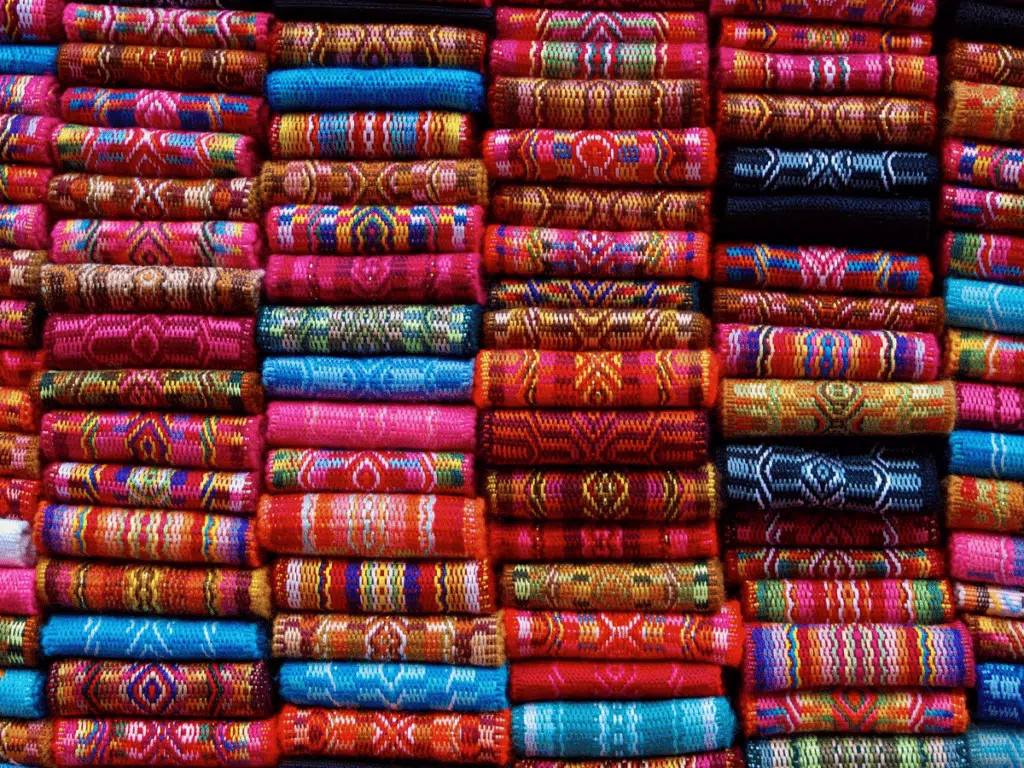
3. Otavalo Market | Otavalo, Ecuador
Best Market in Latin America for Souvenirs
Tracing its roots back to pre-Incan times, the market at Otavalo is the largest of its kind in all of South America and a must on any Ecuador itinerary. Though Otavalo is just a small town, it’s easily one of the must-visit cities in Ecuador for travelers, thanks to its market.
The main attraction here is the incredible variety of textiles, many of which are made from alpaca fur, which is known for being incredibly soft and warm. You’ll find everything from sweaters and hats to patterned blankets and tablecloths.
Other favorite finds at the Otavalo Market include Silver jewelry and jewelry made of tagua, a tropical nut native to Ecuador and known as vegan ivory, as well as leather products, wooden carvings, and souvenirs
Just two hours away by bus or car, Otavalo is an easy day trip from Quito. Public buses leave frequently from El Carcelén bus station in Quito and cost just a few dollars, and group tours are popular (and not terribly expensive!) as well.
Read More: Ultimate Guide to Visiting the Otavalo Market
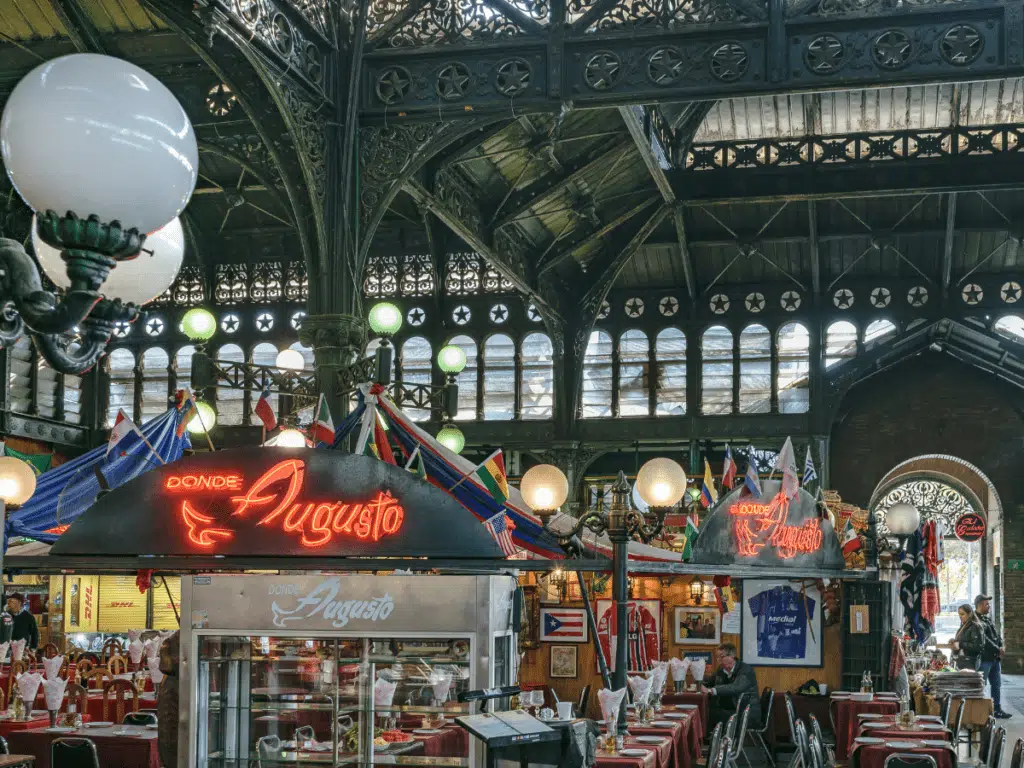
4. Mercado Central | Santiago, Chile
Best Market in Latin America for Food
Originally opened in 1872, the beautiful structure of the Mercado Central in the heart of Santiago, Chile is worth a visit just to see its beautiful architecture alone. However, it is the food that keeps locals and visitors alike constantly coming back for more.
Mercado Central includes a large area filled with vendors serving all kinds of prepared foods. While there are more casual and smaller vendors, many are set up as full-service restaurants – this is a place to try some of Chile’s most delicious specialties. This is the place to try the seafood that Chile is known for around the world.
In addition to prepared foods, this market maintains its fresh food stalls selling everything from fruits and vegetables to meat and the fresh fish you’ll enjoy later. There are also stalls selling handicrafts, leather goods, and more.
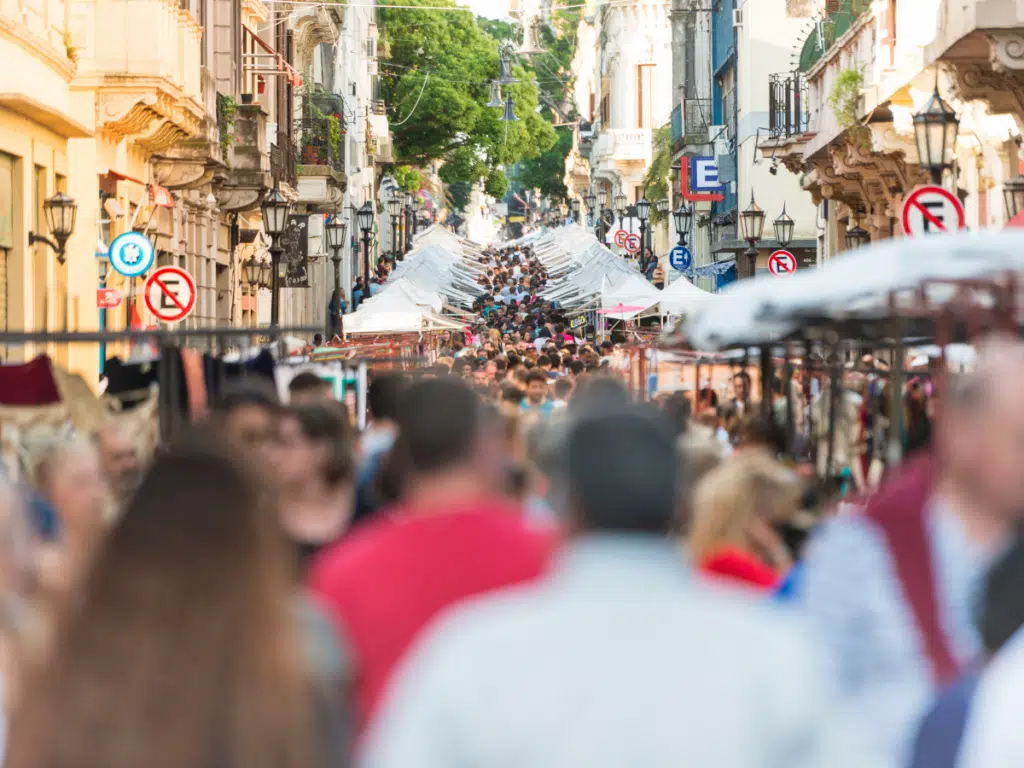
5. San Telmo Market | Buenos Aires, Argentina
The much-loved San Telmo Market is one of the most unique street markets in Latin America, as it truly has a bit of everything to see. Even after visiting many Sundays in a row while living in Buenos Aires, I saw something new each time I visited. This is a must on any Buenos Aires itinerary!
One of the main categories of items you’ll find for sale at the San Telmo Market is antiques – while the market offers so much now, checking out the antique books, jewelry, home goods, and more is like visiting an open-air museum in the city.
Antique stalls are spread throughout the market, but the most interesting items are found in Plaza Dorrego. Visitors will also find things like yerba mate gourds and straws, leather goods like belts and jackets, soccer jerseys, and art and home goods. Make sure to sample all the food along the way, too!
The easiest way to visit this market is by starting in the Plaza de Mayo, which is at the heart of the city and is easily accessible by most bus lines and the subway. The market starts at the Plaza de Mayo and runs down the Calle Defensa at the south end of the square.
Read More: 31 Best Things To Do in Buenos Aires
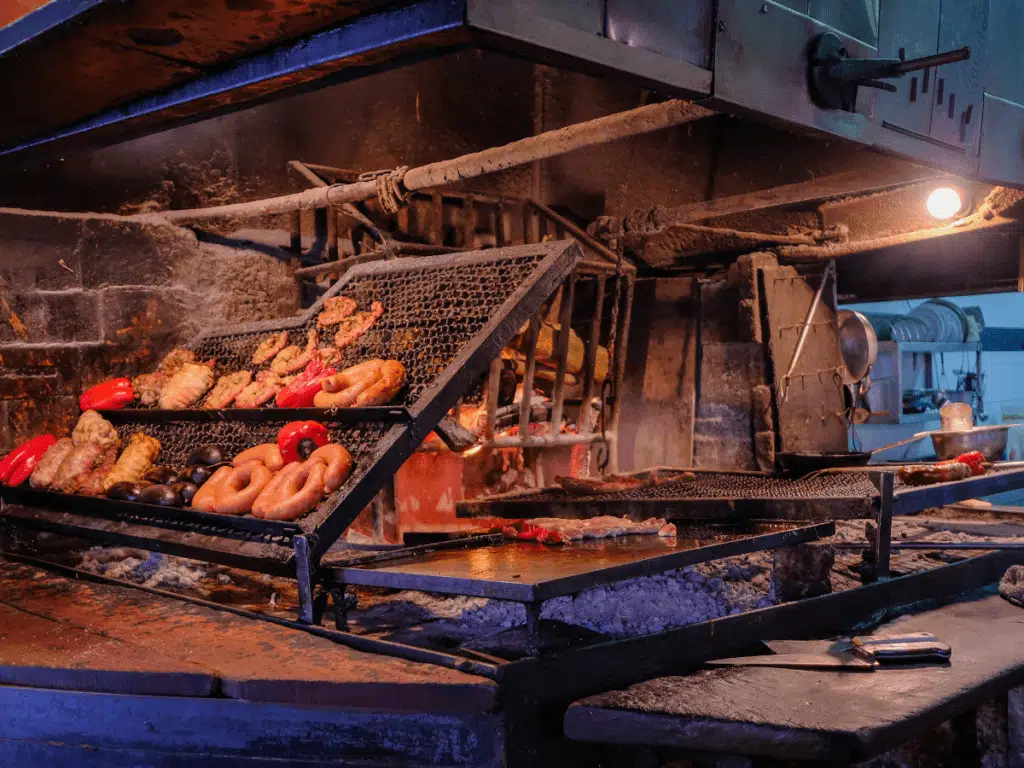
6. Mercado del Puerto | Montevideo, Uruguay
The Mercado del Puerto – or Port Market – in historic Montevideo, Uruguay, has changed a lot since its opening over 150 years ago and is now one of the must-see markets in South America. Located right at the port (of course!), it makes a convenient first stop if you’re arriving in Montevideo via ferry from Buenos Aires.
Opened in 1868, this covered market is now a popular food hall with an old-world feel- the waiters at the sit-down stalls dress for the part with shirts and ties. This is a popular destination for some of the best food that Uruguay has to offer. If you think Argentina loves its steak, well, it has nothing on Uruguay.
The market is filled with barbeques, called parrillas, cooking steaks, chorizo, and everything in between, which fills the entire market and surrounding area with the most delicious smell – it really is the best marketing tactic. Part of the fun of exploring the market is watching the grill masters at work.
In addition to food, you’ll find some shops selling handicrafts, produce, and souvenirs both inside and immediately outside the market.
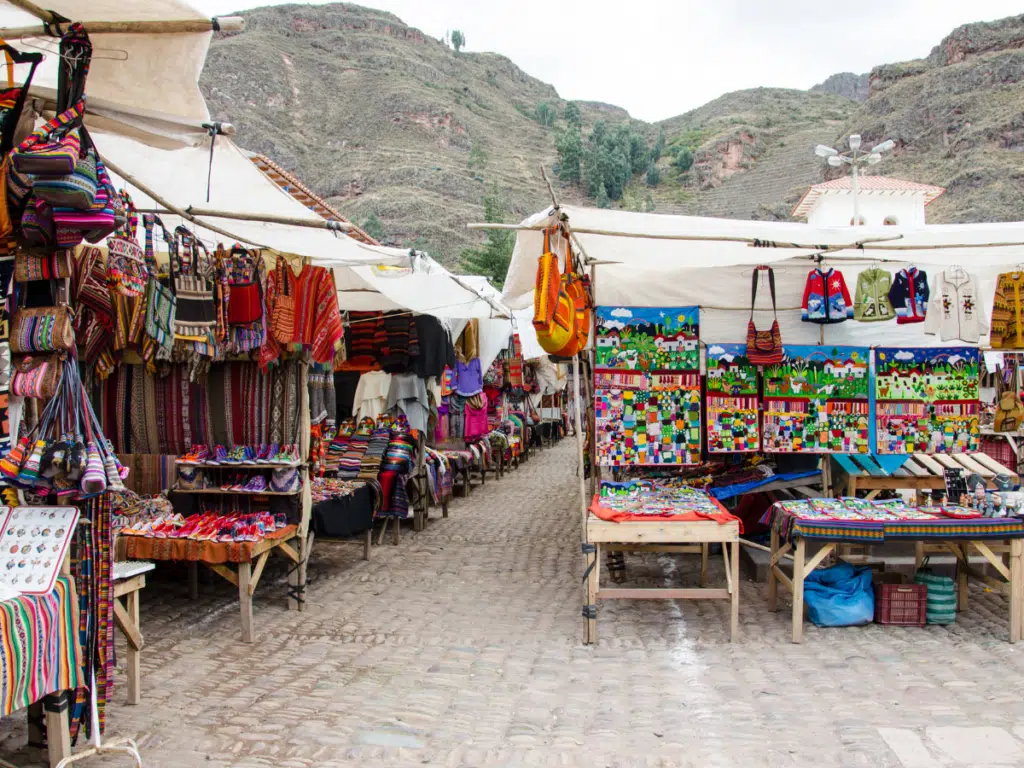
7. Pisac Market | Pisac, Peru
The indigenous market in Pisac, located in the heart of the Sacred Valley in Peru, is one of South America’s best markets, made only better by its historic Incan surroundings. Located about an hour outside of Cusco, Pisac is also home to some of the region’s most important ruins, which makes for a perfect and easy day trip.
Here you’ll find lots of local textiles like alpaca blankets, ponchos, and sweaters, as well as other brightly-colored textiles like purses and backpacks. In addition, expect to see plenty of jewelry, weavings, and other souvenirs that will remind you of your trip.
On the main market day on Sundays, you’ll find even more at the Pisac Market, including local produce and street food. Make sure to save plenty of time to visit the ruins while you’re here; they include dramatic terraces, royal Incan buildings, and even a cemetery to explore.
Read More: Ultimate Guide to Pisac: Pisac Market and the Pisac Ruins

José Rojas Avila is a bilingual New York-based editor, content marketer, and web developer. He is the co-founder of the digital travel publications Explorers Away and Home to Havana and has written for publications like MSN and Thrive Global. José is a Havana, Cuba native and serial entrepreneur. Find him scouting out the best hiking trails around town and teaching himself yet another programming language.

